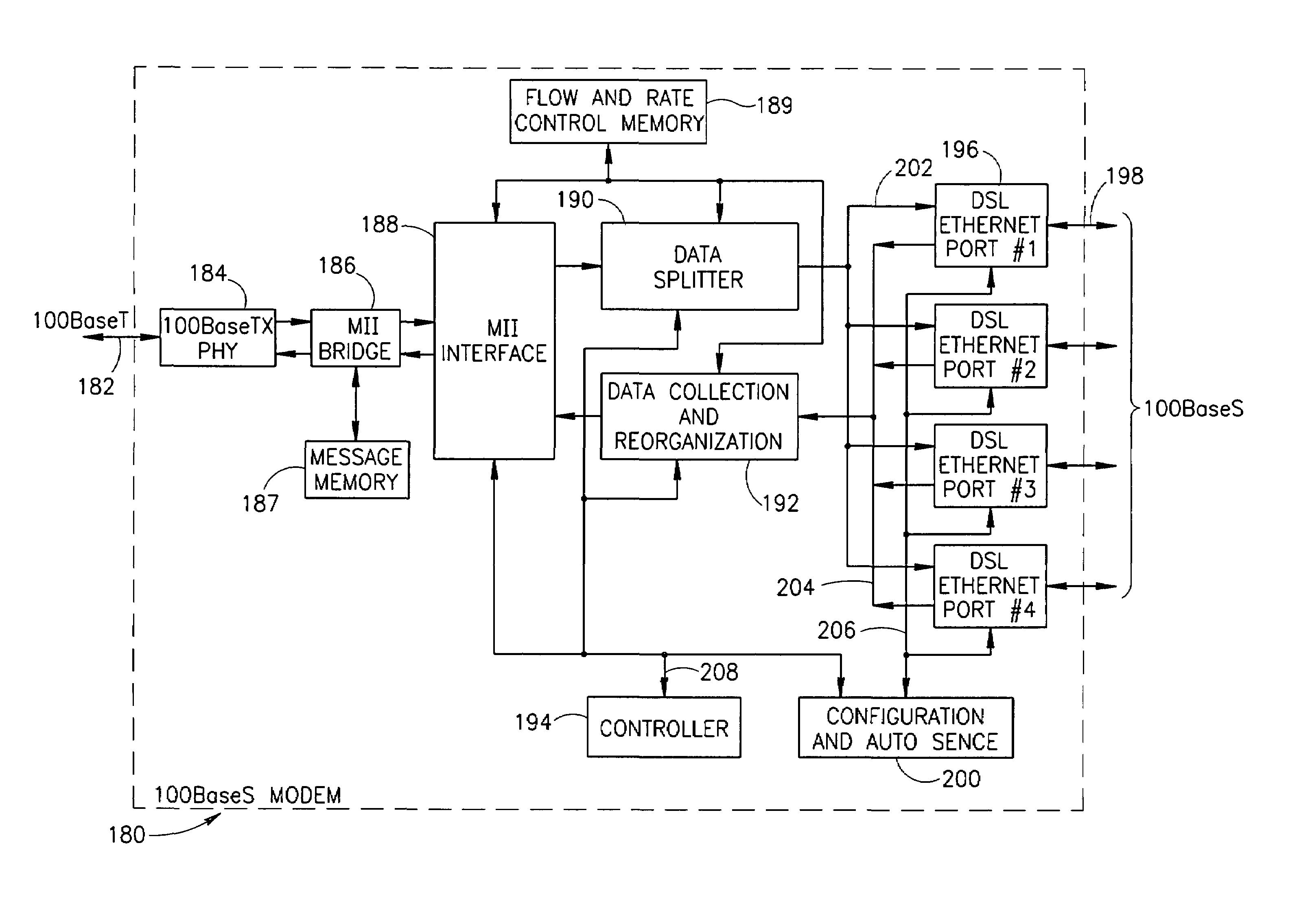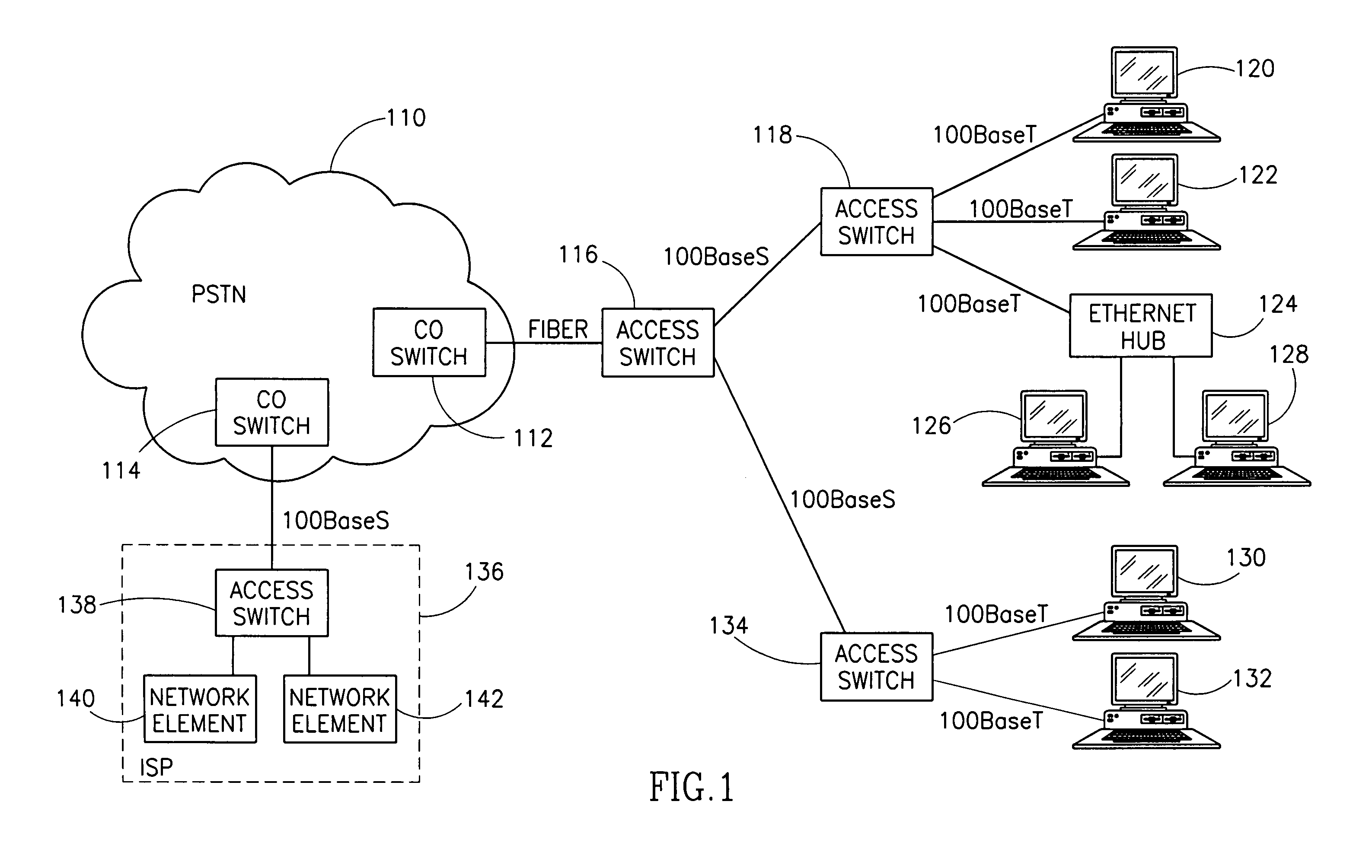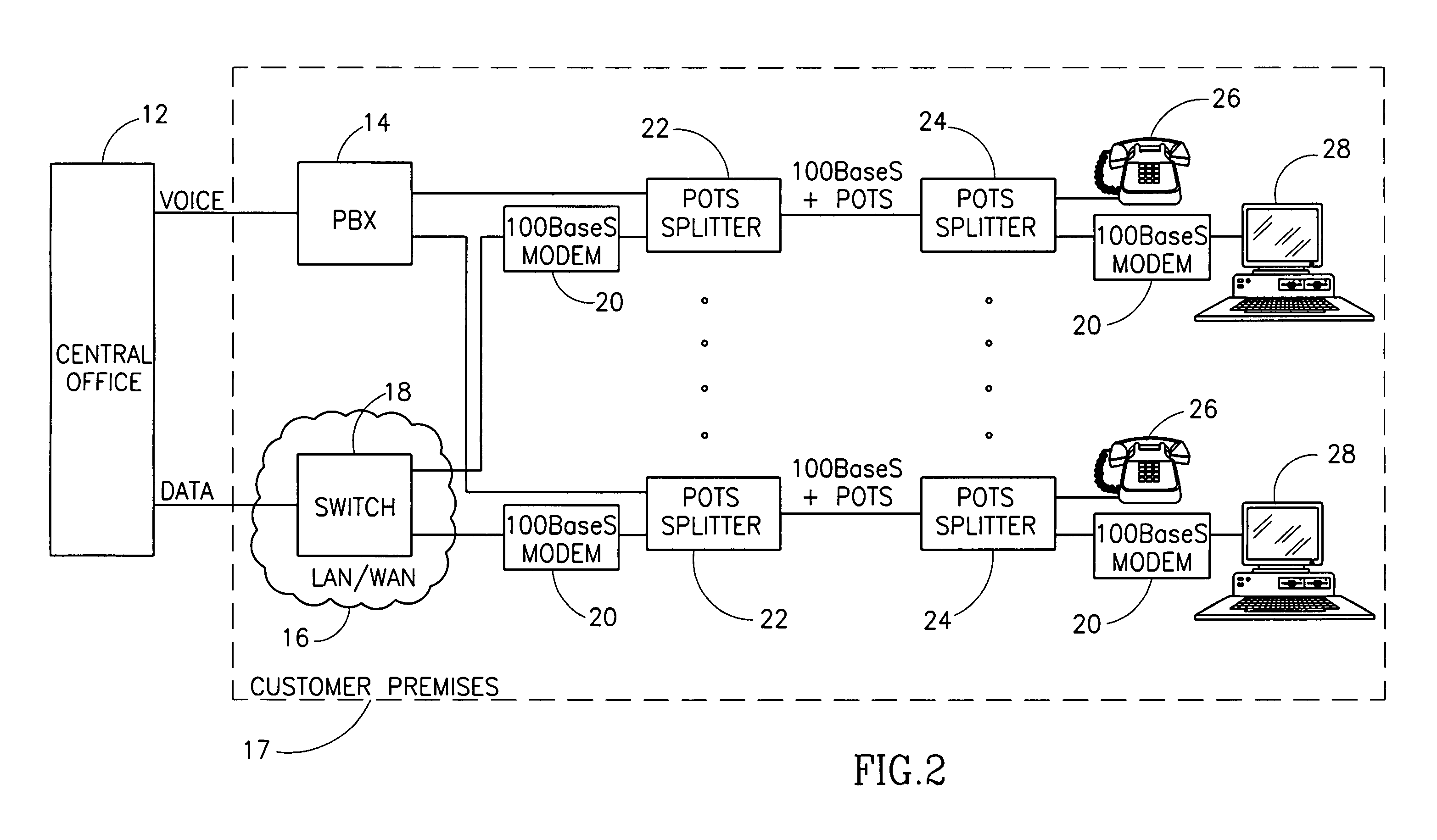High data rate ethernet transport facility over digital subscriber lines
a technology of ethernet and digital subscriber lines, applied in the field of telecommunication systems, can solve the problems of high bandwidth consumption, high cost, and inability to access high-speed data networks, and achieve the effects of high transmission speed, simple and cost-effective, and high quality of servi
- Summary
- Abstract
- Description
- Claims
- Application Information
AI Technical Summary
Benefits of technology
Problems solved by technology
Method used
Image
Examples
Embodiment Construction
[0032]
Notation Used ThroughoutThe following notation is used throughout this document.TermDefinitionADSLAsymmetric Digital Subscriber LineAGCAutomatic Gain ControlANSIAmerican National Standards InstituteBERBit Error RateCADComputer Aided DesignCOCentral OfficeDBSDirect Broadcast SatelliteDSLDigital Subscriber LoopETSIEuropean Telecommunications Standards InstituteFDMFrequency Division MultiplexingFECForward Error CorrectionFEXTFar End CrosstalkFIFOFirst In First OutFTTBFiber to the BuildingFTTCFiber to the CurbFTTCabFiber to the CabinetFTTExFiber to the ExchangeFTTHFiber to the HomeFTTNFiber to the NodeHFCHybrid Fiber CoaxISDNIntegrated Services Digital NetworkISPInternet Service ProviderLANLocal Area NetworkMIIMedia Independent InterfaceMMDSMultichannel Multipoint Distribution ServiceMPEGMotion Picture Entertainment GroupNEXTNear End CrosstalkNICNetwork Interface CardNTNetwork TerminationNTPNetwork Termination PointONUOptical Network UnitPBXPrivate Branch ExchangePCPersonal Comput...
PUM
 Login to View More
Login to View More Abstract
Description
Claims
Application Information
 Login to View More
Login to View More - R&D
- Intellectual Property
- Life Sciences
- Materials
- Tech Scout
- Unparalleled Data Quality
- Higher Quality Content
- 60% Fewer Hallucinations
Browse by: Latest US Patents, China's latest patents, Technical Efficacy Thesaurus, Application Domain, Technology Topic, Popular Technical Reports.
© 2025 PatSnap. All rights reserved.Legal|Privacy policy|Modern Slavery Act Transparency Statement|Sitemap|About US| Contact US: help@patsnap.com



